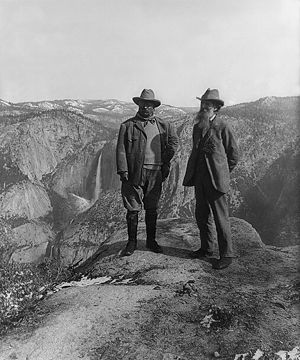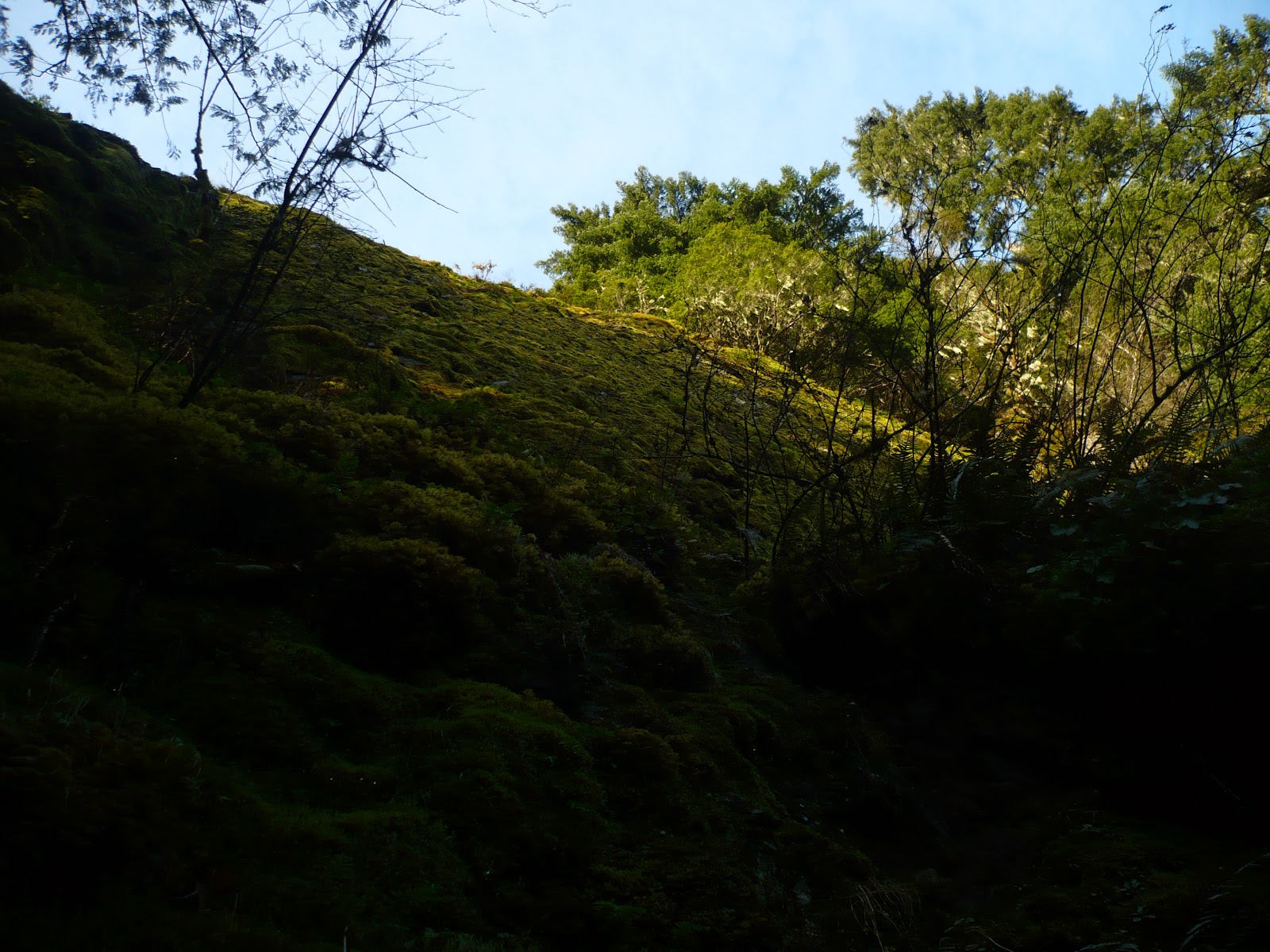| U.S. President Theodore Roosevelt (left) and nature preservationist John Muir, on Glacier Point in Yosemite National Park. In the background: Upper and lower Yosemite Falls. |
Here’s a sample of one:
“The towering giant
sequoias at Yosemite National Park would go unprotected from visitors who might
trample their shallow roots. “
In the same article:
“Gettysburg would
decrease by one-fifth the numbers of school children who learn about the
historic Pennsylvania battle that was a turning point in the Civil War.”
GIVE ME A FRIGGIN’ BREAK!!!!!!!!!!!!!!!!!!!!!!!!
Trampling a giant sequoia’s shallow roots will harm a tree
that has been living for close to a century?
Kids won’t learn about Gettysburg if they can’t visit it?
Apparently, Park Service Director John Jarvis last month
asked National Park superintendents to show by Feb. 11 how they would absorb
the 5 percent funding cuts, according to a recent report.
The report goes on to state: “While not all 398 parks had submitted plans by the time the memo was
written, a pattern of deep slashes that
could harm resources and provide fewer protections for visitors has emerged.”
Think for a minute about the hyperbole used by the journalist
in this statement. A five percent cut is a “deep slash.” To anyone who considers
five percent to be a “deep slash,” prepare to feel some real pain in the coming
years!
I know of no one who wants see any cuts to the budgets of
National Parks. They are truly gems. Unfortunately, politicians have run our
country into such debt that the hurt is only beginning. We have started to see
it in increased taxes to pay for their follies. More are yet to come. Next we
will see it in cuts to government agencies. In the future, cuts to so called “entitlements,”
such as social security will occur.
In a memo from the National Park Service, "Clear patterns are starting to emerge.
In general, parks have very limited financial flexibility to respond to a 5
percent cut in operations."
I’ll bet that if someone was brought in from the private
sector to analyze the agency they could cut 5% without any visitor evening
knowing there were cuts!
Ahh, but my declaration is refuted by John Garder, a member
of the nonprofit parks advocacy group the National Park Conservation
Association. "In the scope of a year of federal spending, these cuts would
be permanently damaging and save 15 minutes of spending, he said. “There's no
fat left to trim in the Park Service budget," he added.
Then why the heck did the federal government just create a
new National Park in California that will have to be paid for by taxpayers.
Does that make sense!!!!
I have gotten off topic. The main reason I wrote this post
is to display how rabid the reporting has been on this subject. Oh my. We’re
going to have to cut 5% from National Parks. Why don’t a few of these reporters
write something about the lies that constantly permeate our government or the moral
decay of this country. Why don’t they write something about joblessness in the
U.S. or how our government continues to lie to us about the murder of our
diplomat and three other men in Benghazi, Libya.
Why not? Because instead of doing their job – making sure
the government has someone looking over its shoulder, they have become nothing
more than a megaphone for those in power. Congratulations journalists. You have
officially jumped the shark.


















